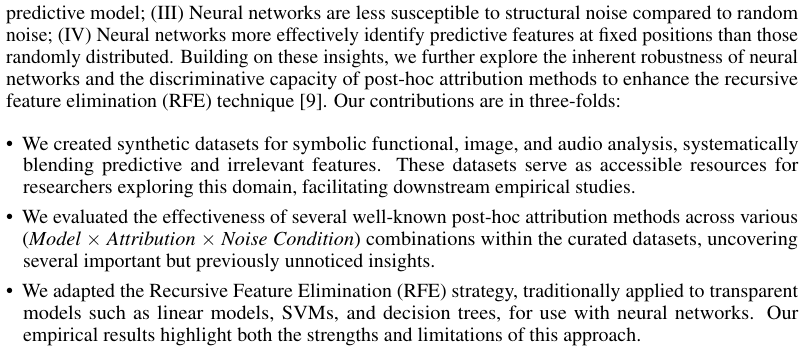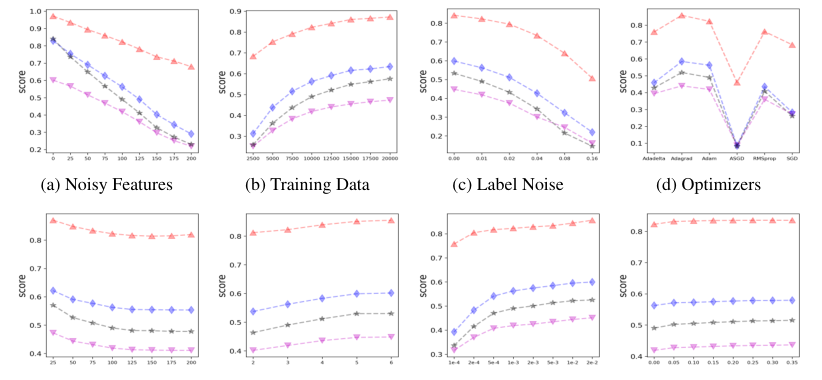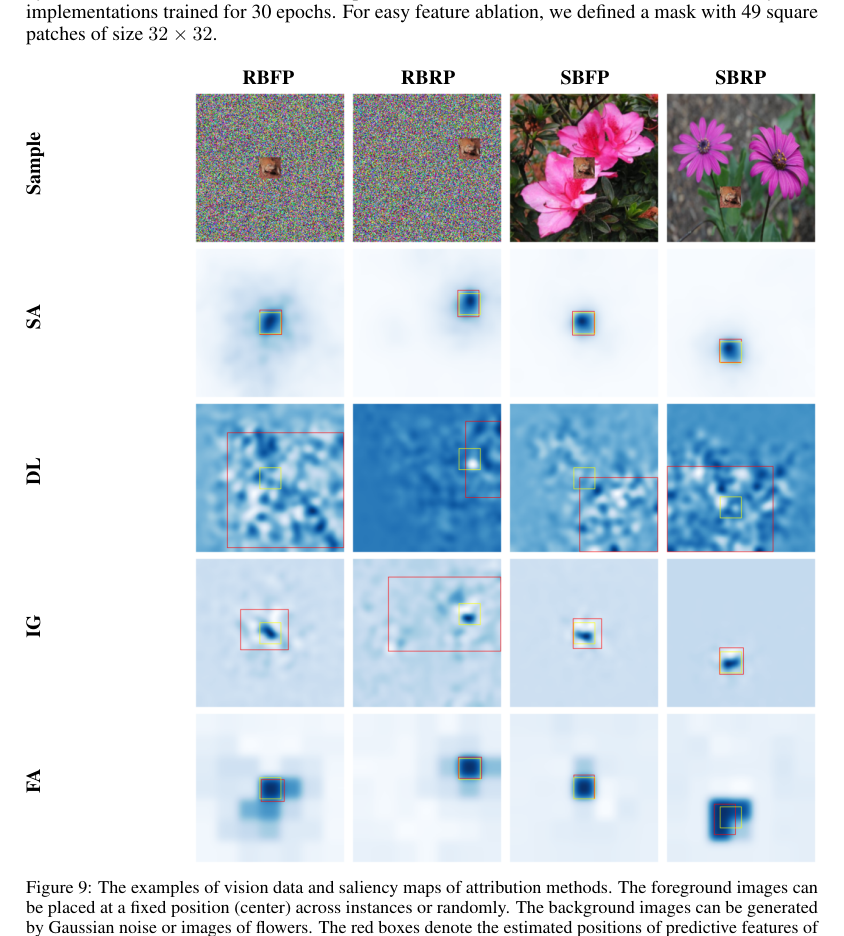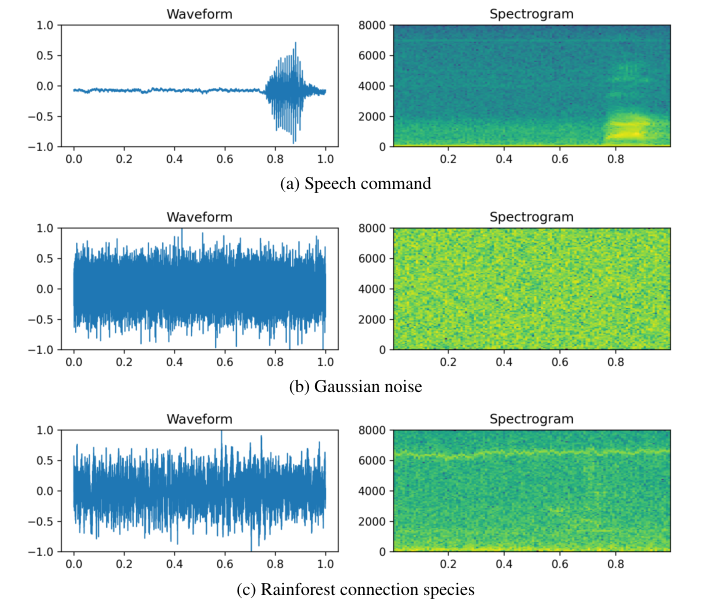ChaosMining: A Benchmark to Evaluate Post-Hoc Local Attribution Methods in Low SNR Environments
Ge Shi, Ziwen Kan, Jason Smucny, Ian Davidson·June 17, 2024
Summary
This research evaluates post-hoc attribution methods in low signal-to-noise environments, focusing on their ability to distinguish predictive features from irrelevant ones across symbolic, image, and audio domains. The study develops synthetic datasets and benchmarks various models and attribution techniques (e.g., gradient-based saliency, DeepLift, Integrated Gradients, and Feature Ablation) under different noise conditions. Key findings include:
1. Gradient-based saliency is effective in feature selection but has scalability limitations.
2. Model generalization is linked to the efficacy of attribution methods.
3. A novel extension to Recursive Feature Elimination (RFE) for neural networks is introduced, addressing the lack of empirical evidence on their effectiveness.
4. Experiments on MLPs, CNNs, ViTs, and RNNs show that performance varies across modalities and noise types, with new metrics like Uniform Score and Functional Precision introduced.
5. Saliency Maps (SA) perform well in low SNR for symbolic data, while AlexNet and Vgg13 struggle due to architectural limitations.
6. RFEwNA, a modified RFE, improves feature selection for neural networks, especially in binary classification tasks.
The research contributes to the understanding of XAI methods in diverse scenarios and highlights the need for future studies on more attribution techniques, diverse model configurations, and noise conditions.
Introduction
Background
Overview of post-hoc attribution methods
Importance of feature selection in low SNR environments
Objective
To assess the performance of attribution techniques in distinguishing predictive features
To identify limitations and strengths across symbolic, image, and audio domains
Method
Data Collection
Synthetic dataset generation
Diverse noise conditions and modalities (symbolic, image, audio)
Data Preprocessing
Techniques for handling low signal-to-noise data
Preparation of models (MLPs, CNNs, ViTs, RNNs)
Attribution Techniques
Gradient-based saliency
Strengths and limitations
Scalability considerations
DeepLift
Performance evaluation
Integrated Gradients
Comparison with other methods
Feature Ablation
Effectiveness in different domains
Recursive Feature Elimination (RFE) extension for neural networks (RFEwNA)
Novel contribution and empirical evidence
Evaluation Metrics
Uniform Score
Functional Precision
Performance comparison across modalities and noise types
Results and Findings
Gradient-based saliency effectiveness and scalability
Model generalization and attribution method correlation
RFEwNA's impact on feature selection
Performance variations across MLPs, CNNs, ViTs, and RNNs
Saliency Maps (SA) in symbolic data and limitations in image models
Noise type influence on attribution methods
Discussion
Interpretation of key findings
Limitations and future research directions
The need for diverse studies on attribution techniques and model configurations
Conclusion
Summary of main contributions
Implications for explainable AI in low SNR environments
Recommendations for future research in the field
Basic info
papers
machine learning
artificial intelligence
Advanced features







